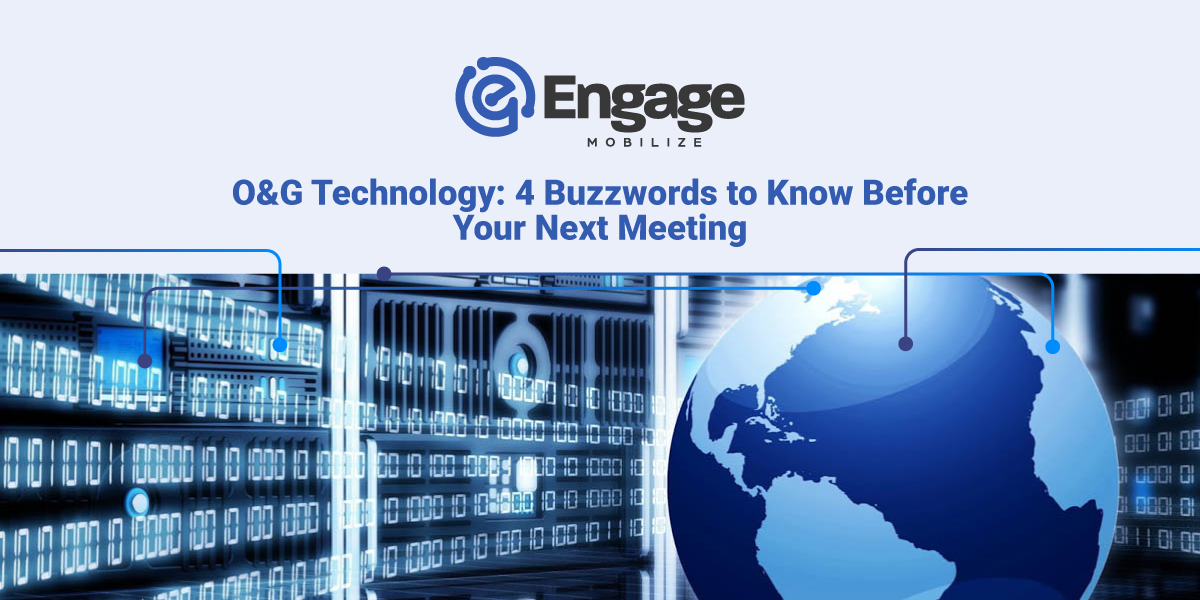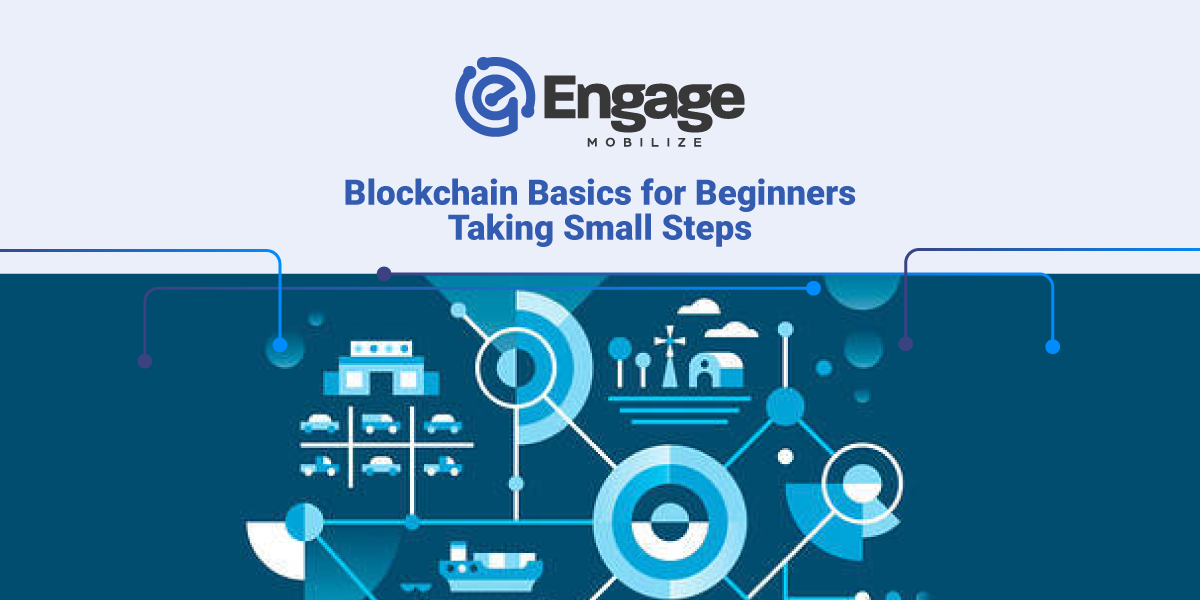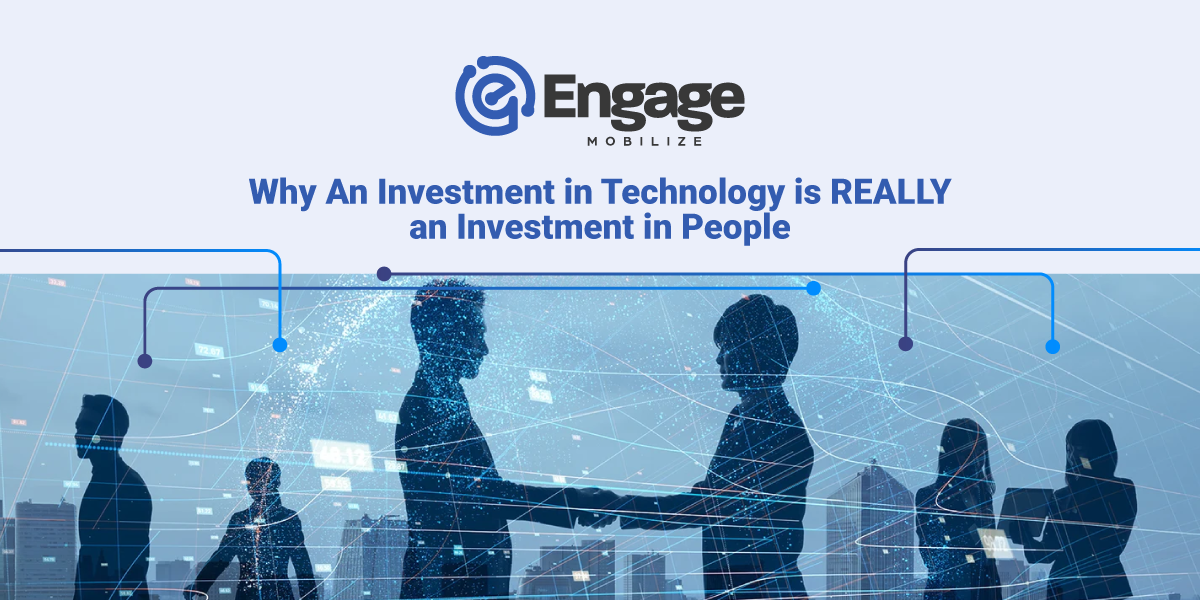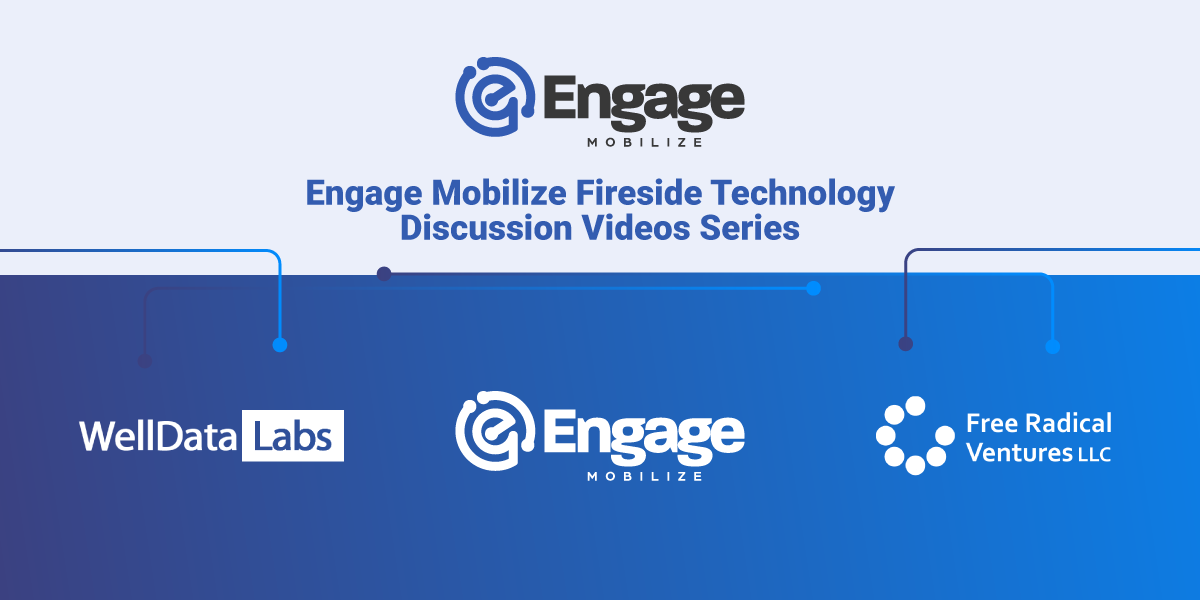O&G Technology: 4 Buzzwords to Know Before Your Next Meeting

Who has been in a meeting and a topic is brought up that you’re just not sure about? We’ve all been there. Someone throws out the new buzzword and you just nod your head and hope nobody asks for your input. Technology is ever evolving and keeping up with all the latest terms can be a challenge. I’ve compiled a list of the four most common buzzwords in technology and what they mean to the oil and gas industry. Get ready to win MVP at your next meeting!
1.) Machine Learning and AI
People often use the terms Machine Learning and AI (Artificial Intelligence) interchangeably, but what do these terms truly mean, and what are the differences? AI is the science of training machines to perform human tasks. In broad terms, it’s giving computers the ability to solve problems without the help of human interaction. So how does this relate to Machine Learning? Machine Learning is an application of AI that trains the machine how to learn. Its main function is to allow the computer or machine to learn automatically, without human input. The key to Machine Learning is it operates without relying on specific instructions. Rather, it has the ability to learn and improve from experience, which once refined can be automatically applied to other data sets.
According to the IDC, spending on cognitive and AI systems will reach $77.6 billion in 2022, more than three times the $24.0 billion forecast for 2018. So what industries are using Machine Learning the most? Healthcare, financial services, transportation and retail are big ones and yes, you may have guessed it, oil and gas!
From upstream to downstream, energy companies have started using these models to become more efficient. Examples include, analyzing minerals in the ground, predicting refinery failures or streamlining oil distribution. Most recently, oil and gas companies are using machine learning methods to increase efficiencies with respect to field operations. Companies who have adopted these platforms have been able to predictively schedule repeatable services and liquid transport, saving time and money. They’ve also been able to use route optimization techniques to cut down on windshield time. All together, this has saved these companies millions of dollars, while elevating their production to new heights.
2.) IoT
Most people have heard the term Internet of Things or IoT, but what does this really mean? IoT is defined as a network of devices that contain the ability to connect, interact and exchange data. It involves extending connectivity beyond devices such as smartphones or computers, and extending it into devices that in the past, weren’t associated with internet activity. Great examples of new IoT devices are smart thermostats that automatically adjust temperature based on family routines of when they are home, away or asleep. The amount of IoT devices in the world are increasing at a staggering rate. To put this in perspective, Business Insider’s premium research service, expects there will be more than $24.0 billion IoT devices on Earth by 2020. That’s approximately four devices for every human being on the planet!
As we move to the future, no industry will escape the impact of IoT. WIth that said, the oil and gas industry stands to see one of the biggest impacts from IoT devices. These companies are now finding analytics data easier to acquire than ever before. Perhaps the biggest impact of all, is now they are able to see this information in real-time. Some of the biggest ways IoT technology is affecting oil and gas is by optimizing their pipelines and well sites, which can lower non-productive time and allow for better timed maintenance and efficiency. There also are health and safety benefits, such as the ability to monitor equipment for failure, leaks or erosion. As time goes on, non-IoT devices in the oilfield will be a thing of the past.
3.) Cloud based
Ok, most of us know that when people say “it’s stored in the cloud”, it doesn’t really mean up in the sky. However, do you really know what they are referring to? In today’s age, where your data is stored and its security are paramount. First thing to know is when data is stored in the cloud, it still has to be stored in a physical place. These are typically referred to as “server farms”. The benefit to the cloud is your information no longer needs to be saved on your device or on premise servers. For years large companies have been reluctant to move to cloud based solutions because of fear of a security breaches, however it’s now becoming the norm for companies to store their data in the cloud. Amazon, Microsoft, Alibaba, IBM and Google are some of the top cloud service vendors in the world. According to Forrester Research, these companies will see $200.0 billion in global public cloud based spending in 2019.
So how does this trend of cloud based solutions impact oil and gas? First and foremost, it allows energy companies to have access to their data anywhere and anytime. This allows them to operate anywhere in the world, just like they could at their office. Additionally, cloud services are affordable. They offer no upfront costs, and eliminate costly maintenance and support. They also provide scalable solutions for those companies that are growing fast. According to the IDC, by 2020, 100% of oil and gas companies will have invested more in cloud-deployed applications than in supporting or acquiring on-premises apps. All industry trends point to large increases in cloud technology, and the oil and gas industry is no different.
3.) Blockchain
Perhaps there is no bigger buzzword out there than Blockchain. At its core, blockchain is nothing more than a distributed ledger. It consists of digital information (block) stored in a public database (chain). The purpose of blockchain is to record transactions between two parties efficiently and in a verifiable and permanent way. When a transaction occurs, information about each transaction, such as time of day, date or dollar amount are stored in blocks. Each block then stores a unique code called a “hash”. After a block has been added to the end of the blockchain, it becomes publicly available for anyone (with clearance) to view. This means there are thousands if not more copies of the same blockchain. Each copy of the blockchain is identical and spread out across countless networks, making it difficult to hack or manipulate. If a hacker wanted to change information, they would have to hack every copy of the blockchain on every network.
Banking, healthcare and energy are among the industries that will be most affected by blockchain. With oil and gas, massive amounts of transactions are taking place both internally and with their service providers. In fact, a mid-sized E&P company can complete up to a million transactions in just one year. An infusion of blockchain technology in energy will no doubt save massive amounts of time and money. One additional benefit to blockchain technology is it paves the way for smart contracts. Oil and gas companies will no longer have to wait for long approval cycles within their invoicing platforms, but rather transactions will be approved and paid in real-time. One barrier to entry is the lack of clean data in the field, however companies are beginning to digitize their workflows allowing such technologies to thrive. Look for blockchain to continue to be a hot topic of discussion for CTOs and Supply Chain leaders in 2019.
Ok, now that you’re armed with a further understanding of the latest buzzwords in technology, it’s time for your next meeting!
Find out more about our digital field management solutions at www.engagemobilize.com
Ross Miller
Head of Marketing
Engage Mobilize
Media Contact
Cassandra (Cassie) Skindzelewski, Director of Marketing
Marketing@engage-m.com
(720) 575-6695
Are you ready to learn more?
We’re ready to talk to you about the specific cost savings, workflow efficiencies and data insights that come from taking your field operations digital.
Share this
Similar Stories

Baby Steps to Blockchain

Why An Investment in Technology is REALLY an Investment in People
